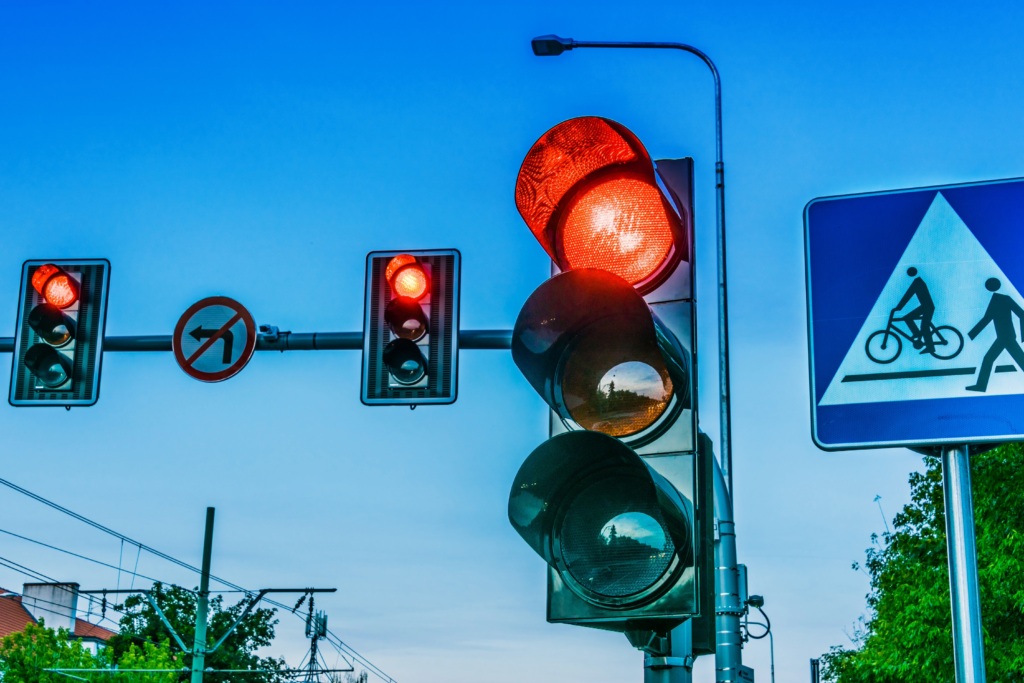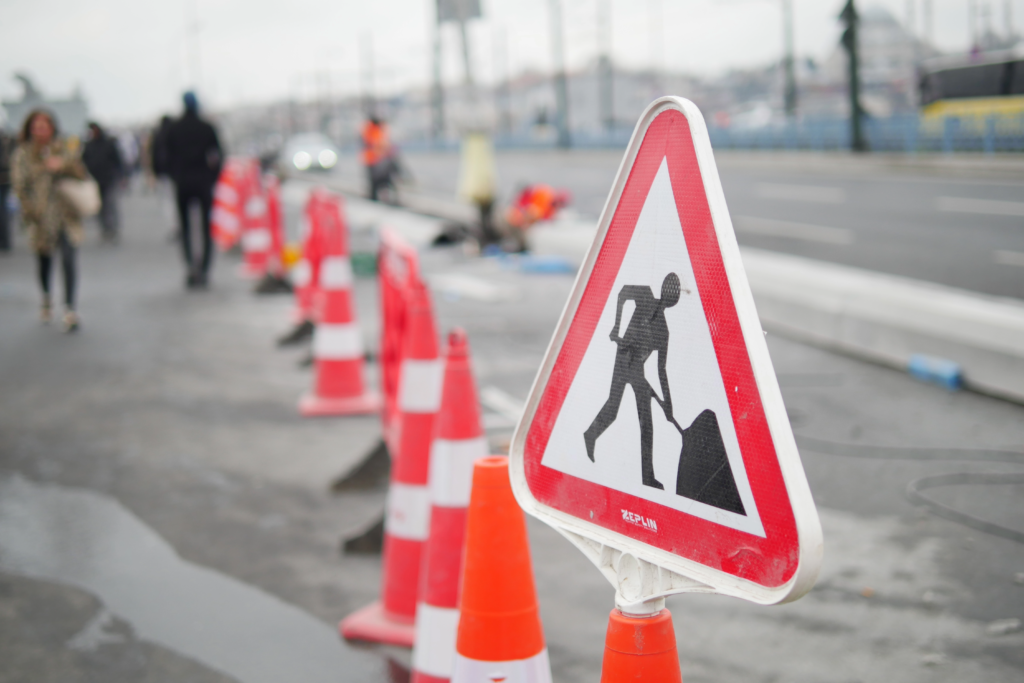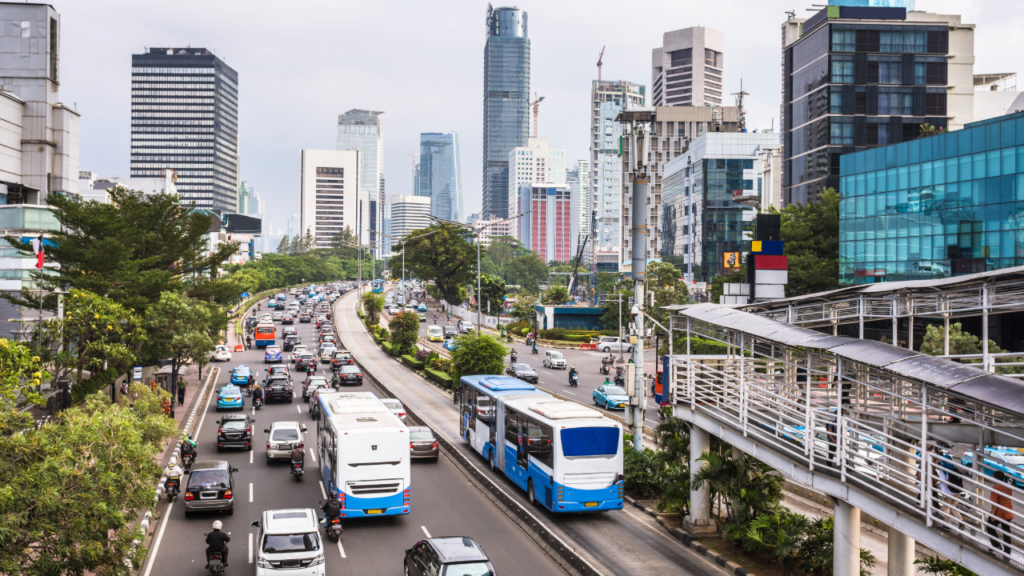Traffic signs play a crucial role in regulating and guiding road users, ensuring safety and efficiency on the roads. Here are some important types of traffic signs:
- Mandatory Signs
- Cautinary Signs
- Informatory Signs
1) Mandatory Traffic Signs :
Mandatory traffic signs are regulatory signs that indicate specific actions that road users must adhere to. These signs are typically white with a blue circle and contain symbols or words in black. Here are some common types of mandatory traffic signs:
Stop Sign:
A red octagonal sign with the word “STOP” in white letters, indicating that drivers must come to a complete stop at the marked line or intersection.
Yield Sign:
A red and white triangular sign with the word “YIELD” in white letters, indicating that drivers must yield the right-of-way to other traffic or pedestrians.
Do Not Enter Sign:
A white square or rectangular sign with a red circle and a white horizontal bar, indicating that drivers are prohibited from entering the road or lane.
No Left Turn Sign:
A white square or rectangular sign with a red circle and a black arrow pointing left, indicating that drivers are prohibited from making a left turn at the intersection.
No Right Turn Sign:
Similar to the no left turn sign but with the arrow pointing right, indicating that drivers are prohibited from making a right turn at the intersection.
One Way Sign:
A white square or rectangular sign with a black arrow pointing right or left inside a blue circle, indicating that the road is one-way in the direction of the arrow.

Keep Right/Left Sign:
A white square or rectangular sign with a black arrow pointing right or left inside a blue circle, indicating that drivers must keep to the right or left of the traffic island or obstruction ahead.
Speed Limit Sign:
A white rectangular sign with black lettering indicating the maximum speed limit allowed on that particular road or section of road.
These are some of the common types of mandatory traffic signs that road users must follow to ensure safe and orderly traffic flow.
2)Cautionary Traffic Signs :
Cautionary traffic signs, also known as warning signs, are used to alert drivers about potential hazards or conditions ahead on the road. These signs are typically yellow with black symbols or text. Here are some common types of cautionary traffic signs:
Curves Ahead Sign:
This sign indicates that there are curves in the road ahead and advises drivers to slow down and proceed with caution.
Steep Hill Descent Sign:
This sign warns drivers of a steep downhill slope ahead, advising them to use lower gears and maintain control of their vehicle.
Pedestrian Crossing Sign:
This sign alerts drivers to pedestrian crossings or areas where pedestrians may be crossing the road, prompting them to watch out for pedestrians and adjust their speed accordingly.

School Zone Sign:
Similar to the pedestrian crossing sign, this sign indicates that a school zone is ahead, advising drivers to be cautious and watch for children crossing the road.
Deer Crossing Sign:
This sign warns drivers of the possibility of deer or other wildlife crossing the road, prompting them to be vigilant and prepared to slow down or stop if necessary.
Slippery Road Sign:
This sign indicates that the road surface may be slippery due to wet or icy conditions, advising drivers to reduce their speed and use caution.
Traffic Signal Ahead Sign:
This sign warns drivers of an upcoming traffic signal or intersection, advising them to be prepared to stop or yield as necessary.
Construction Zone Sign:
This sign alerts drivers to construction or road work ahead, advising them to slow down, be prepared for lane closures or detours, and watch for construction workers or equipment.
Falling Rocks Sign:
This sign warns drivers of the possibility of falling rocks or debris on the road, advising them to proceed with caution and watch for signs of rockslides or avalanches.
Railroad Crossing Sign:
This sign warns drivers of an upcoming railroad crossing, advising them to watch for trains and be prepared to stop if necessary.
3)Informatory Signs :
Informatory traffic signs provide non-regulatory information to road users, guiding them to specific destinations, facilities, or services. These signs are typically blue with white symbols or text. Here are some common types of informatory traffic signs:
Directional Signs:
These signs provide directional information to road users, guiding them to specific destinations or locations. Examples include:
- Route markers (e.g., interstate highway signs)
- Exit signs indicating directions to towns, cities, or landmarks
- Arrow signs indicating the direction of a road or highway
Destination Signs:
These signs indicate the distance and direction to specific destinations, facilities, or services. Examples include:
- Distance markers indicating the distance to towns, cities, or landmarks
- Signs indicating the location of rest areas, service stations, or tourist attractions
- Hospital signs indicating the direction to the nearest medical facility
Service Signs:
These signs provide information about services or facilities available along the road, such as rest areas, gas stations, or food outlets. Examples include:
- Rest area signs indicating the location of restrooms, picnic areas, and parking facilities
- Gas station signs indicating the location of fuel stations and services available
- Food outlet signs indicating the location of restaurants, cafes, or fast-food chains
Informational Signs:
These signs provide general information to road users, such as road conditions, local regulations, or cultural sites. Examples include:
- Road condition signs indicating the presence of roadwork, detours, or adverse weather conditions
- Cultural site signs indicating the location of historical landmarks, museums, or scenic viewpoints
- Regulatory signs providing information about local regulations or restrictions
Tourist Information Signs:
These signs provide information about tourist attractions, scenic routes, or points of interest. Examples include:
- Scenic route signs indicating the direction to scenic viewpoints, nature reserves, or national parks
- Tourist attraction signs indicating the location of historical sites, monuments, or recreational areas
- Informational signs providing details about local flora, fauna, or geological features
Some of the common types of informatory traffic signs are used to provide information and guidance to road users, helping them to navigate safely and efficiently to their destinations.
